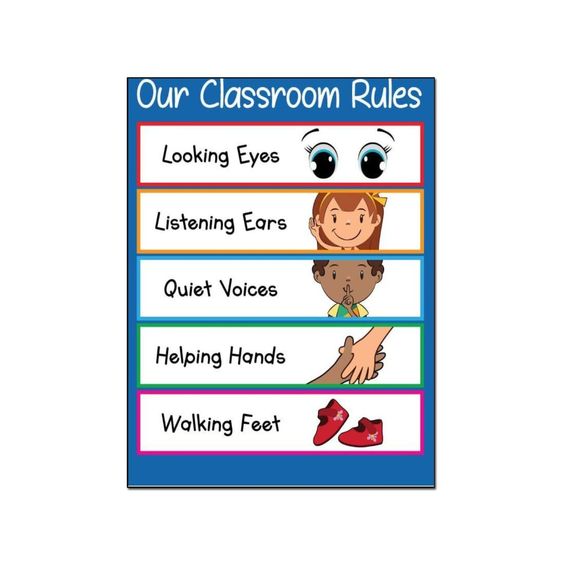Introduction:
A well-organized preschool classroom is the foundation for a successful learning environment. To achieve this, it’s essential to establish a set of rules that ensure a smooth and productive flow of activities. These rules should be introduced on the first day of school and consistently reinforced. Let’s explore 20 rules to help manage your preschool classroom effectively.
1. Establish a daily routine: A predictable schedule contributes to a well-functiiotning classroom. Post the daily routine where students can see it, and refer to it throughout the day.
2. Set clear expectations: Clearly outline your expectations for behavior and participation, making sure children understand what is expected of them.
3. Use positive language: Frame your rules positively, focusing on what students should do instead of what they shouldn’t.
4. Develop age-appropriate rules: Keep in mind that preschoolers have shorter attention spans and may struggle with complex instructions.
5. Reinforce good behavior: Praise children for following rules and demonstrating positive habits.
6. Encourage sharing: Teach children the importance of sharing resources and taking turns during playtime.
7. Implement proper cleanup routines: Encourage children to clean up and restore their designated areas after playtime or activities are completed.
8. Create a quiet space: Designate a “quiet zone” where children can go to relax or decompress if they become overwhelmed.
9. Promote self-regulation: Encourage children to express their feelings, identify their needs, and practice problem-solving skills.
10. Allow for choice: Offer various options for children to select from during activities, fostering their sense of autonomy and initiative.
11. Implement smooth transitions: Use verbal cues, songs, or gestures to signal transition times clearly, allowing students to switch activities seamlessly.
12. Teach about personal space boundaries: Help students understand the importance of maintaining personal space and respecting others’.
13. Model appropriate behaviors: Demonstrate the desired behaviors, making sure your students understand the correct way to conduct themselves.
14. Teach conflict resolution: Encourage children to express their issues and provide guidance for resolving conflicts independently and peacefully.
15. Foster communication: Create an environment that encourages open communication among students.
16. Use visuals: Develop visual cues like posters, charts, or stickers to reinforce the rules and expectations in your classroom.
17. Encourage group activities: Structure activities that involve teamwork, teaching children to work collectively and embrace cooperation.
18. Implement a structured snack time: Schedule a set time for snacks every day, creating consistency and routine.
19. Encourage mindfulness: Teach mindfulness techniques, like deep breathing or relaxation exercises, to help children regulate their emotions.
20. Provide regular feedback: Discuss children’s progress with them and share constructive feedback regularly, allowing them to feel confident in their growth and development.
Conclusion:
By implementing these 20 rules in your preschool classroom, you’ll create an engaged, organized environment where both students and educators can thrive. Remember that consistency is key – maintain clear expectations while fostering open communication with your students throughout the school year.





